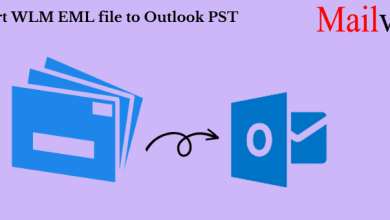Cross-Platform Powerhouse: React Native Bridges the Mobile-Web Divide

The need for a professional mobile app to serve customers better and more meaningfully is rising across all industry verticals. With a feature-rich mobile app, businesses can hit multiple targets with a single aim. From streamlining their processes to offering a highly satisfying user experience, mobile apps provide some excellent benefits to businesses.
After the introduction of cross-platform mobile app development frameworks like React Native and Flutter, even startups and small-scale industries can afford to develop a mobile app for different platforms, like Android and iOS. You only need a reputable React Native app development company in India that can help build a highly superior, high-performing, next-gen mobile app.
Before the invention of cross-platform frameworks, businesses had to hire two separate teams for Android and iOS platforms, respectively. Also, they had to write two separate codebases, each for one platform. The whole process was time-consuming and costly.
Cross-platform app development allows developers to create mobile apps with a single codebase for different platforms. With the astonishing code reusability feature, developers can reuse the code multiple times to create similar apps for Android and iOS.
React Native is an open-source, cross-platform app development framework built by Facebook and has carved a niche for itself since its inception. With React Native, you can create a native-like mobile app with excellent performance and speed.
React Native for Web: A Comprehensive Approach
The best thing about React Native is it can also be used to build high-quality, browser-supporting web applications. Recently, they have launched React Native for Web to build an app that can run on Android, iOS, and web browsers with standard web technologies.
This is a giant leap from being a mobile-only app development framework. It is right to say that React Native is bridging the gap between web and mobile by allowing developers to build apps that run on any platform, irrespective of web or mobile.
The Need for React Native for Web
React Native is built on React, a JavaScript library. Now, React is built explicitly by Facebook for the web. You might wonder why they needed to introduce such technology in the first place.
Let’s understand this dilemma in detail. First, the foundations of mobile and web apps are entirely different.
Furthermore, when it comes to React, it renders div and span, basic HTML5 elements to build a layout with React DOM renderer and DOM APIs. On the other hand, React Native renders platform-specific components, such as View and Text, with the React Native renderer and OS APIs.
Hence, we can see why React and React Native support web and mobile projects, respectively.
The invention of React Native for the Web is an official attempt to bridge this gap. With it, developers can build cross-platform applications with a single React Native codebase.
Advantages of React Native for Web
Let’s check out some advantages that React Native for Web has to offer to businesses and developers.
- React Native for the Web is as capable as React Native with various features, libraries, and modules. Also, it has multiple accessibility tools like accessibilityLabel and accessibilityRole to build future-ready web applications.
- React Native for Web has the same productive CSS-in-JS pattern as React Native. You will not need a separate UI kit to build and style a small-scale mobile app.
- Almost all React Native UI kits support React Native for Web. It eliminates the need to use web-only UI kits.
- If you have an existing React Native mobile app, you can add web support. All you need to do is to install a few packages and configurations to make your app web-supportive.
- As the React Native for Web project is maintained regularly, the team will actively handle React Native compatibility as per the new APIs and features.
Fundamentals of React Native for Web
Learning about the basics of React Native for the Web will give you a good idea of how it can be used to build cross-platform applications.
1) Modern React
React Native for Web primarily uses Modern React APIs like functional components and hooks to build web applications. You need to hire React Native developers with prior exposure to developing web applications. As React Native for web is based on React DOM, it supports the framework.
2) Modern Web
Developers use native DOM APIs to build a set of functionalities while using React Native for Web. Sometimes, APIs have remained the same since their introduction, but switching to new DOM APIs can be a quick task to build high-end functionalities.
3) React Native for Web Components
Almost all React Native components are available with React Native for Web as well. Mostly, developers use standard tools like View, Image, Text, TextInput, ScrollView, etc. Also, to build feature-rich web applications, React Native for Web exports various modules. You must determine the modules you want for your project based on requirements. You can use the Babel plugin to bundle the components you are using.
4) Development Experience
Using the Expo kit, you might get the hot reloading feature to develop cross-platform web applications. However, if you are from an HTML background, you might struggle with React Native for Web.
5) Styles of React Native for Web
React Native for Web components mostly use JavaScript to build styles. These styles are then further translated into native CSS. The best advantage of this perfect styling system is that it eliminates all the issues you might face while using CSS on large projects. Also, you will not have to be familiar with any domain-specific styling language.
6) Expo
Expo is a robust framework with a set of tools to kickstart your React Native project. You only need a recent Node.JS version and a phone or emulator to start the project. The best thing is you can also use Expo to build React Native web applications. First of all, you need to install and run Expo and then make changes to the browser. Developers prefer Expo for web apps due to the brilliant UI for browsers it can build.
7) Navigation
With React Native for Web, you can build a web app that navigates smoothly without any hassles. Developers mostly use react-navigation, a library that supports React Native for Web.
8) Community Support
The massive React Native community is here to support you if you face any issues during development. You can connect to https://github.com/necolas/react-native-web if you face any challenges or issues. Suppose you have outsourced the project of React Native app development in India or to other countries. In that case, you need to sit back and relax, as talented developers will find a way to resolve issues.
9) Reliability & Authenticity
React Native for Web is a highly reliable framework for building cross-platform applications. The framework has undergone production and unit testing and is easy to use and implement. Also, all the library modules have been modified, and substantial improvements have been made as canary releases.
Conclusion
React Native for the Web is a revolutionary step to build cross-platform apps supporting web browsers. It has perfectly bridged the gap between web and mobile platforms by using a single codebase to build web and mobile apps without extra effort and time. If you want to reach out to your target audience via a feature-rich app that performs excellently, think of React Native for Web. You can hire a mobile app development company in India with prior experience in developing web applications.



